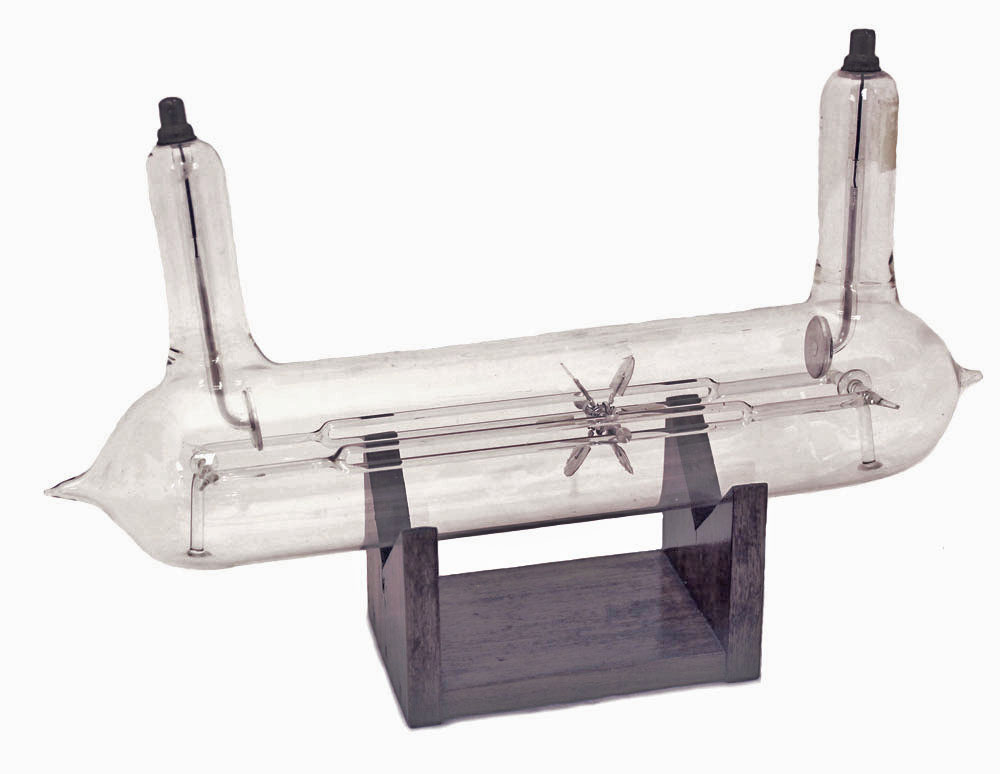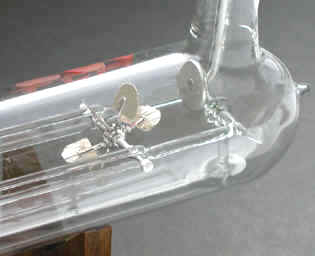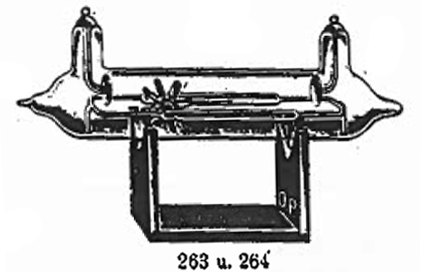Crookes Railway Tube (ca. 1910-1950)

This type of gas discharge tube (aka paddle wheel tube) was invented in the 1880s by William Crookes as part of his investigations into the nature of cathode rays (electrons).

When high voltage is applied across the tube, the paddle wheel travels along the glass "railway track" from the cathode towards the anode. This movement was originally believed to demonstrate that the cathode rays possessed momentum that they transferred to the paddles.
While the tube’s cathode rays (electrons) do possess momentum, the latter is not sufficient to turn the paddles. As explained by the “discoverer” of the electron, J.J. Thompson, the turning of the wheel was due to the radiometric effect, i.e., the heating of the gas molecules adjacent to the area of the paddles being struck by the cathode rays. For more information about this topic, please check out T.E. Humphrey’s “A Century-Old Question: Does a Crookes Paddle Wheel Cathode Ray Tube Demonstrate that Electrons Carry Momentum?” (The Physics Teacher Vol. 52, p. 142; 2014).
Each paddle in our tube has fluorescent strips that glow when struck by electrons—cool.
The figure below from the 1914 catalog of the Otto Pressler company is so similar to the example in the collection that it is hard not to conclude that our tube was manufactured by Pressler.

Size: Approximately 9" long and 2" in diameter
